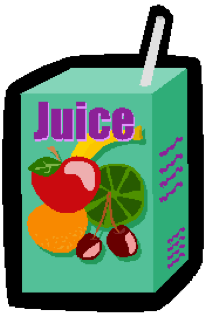Fruit Drinks Are Not the Same as Fruit Juice: Don’t Be Misled by Confusing Label Information

By Reed Mangels, PhD, RD
Health experts, including the American Academy of Pediatrics (AAP), recommend putting limits on the amount of 100% fruit juice that children drink in a day. That’s because excessive fruit juice consumption is associated with overweight and obesity and dental cavities. Ideally, children would eat fresh fruit and not rely on fruit juice to provide vitamin C and other nutrients. For the record, the AAP calls for limiting 100% fruit juice to no more than
- 4 ounces per day for 1- to 3-year olds,
- 4-6 ounces per day for 4- to 6-year olds,
- 8 ounces per day for older children and teens (1).
It gets confusing when we think of all the fruit drinks that are out there. These products may be called juice beverages, juice drinks, juice cocktails, diluted juice, fruit punch, fruit-flavored juices, or other names that imply that they are filled with fruit. In reality, they may be mostly sugar (or artificial sweeteners) and water. At best, they contain some fruit juice but are not 100% juice.
A recent study (2) found that almost all fruit drinks that were purchased by households with young children had claims on their labels that made them appear to be healthy. The most common claims suggested that products had “natural flavors,” “no preservatives, or that they were “organic.” Another common label claim was that products had “100% Daily Value of vitamin C” or were a “good source of vitamin C.” Other claims included “sugar free,” “does not contain high-fructose corn syrup,” and “no artificial sweetener.” Ironically, although 97% of the products had label claims related to nutrition, none would be considered part of a healthy diet for young children because they contain added sugars or artificial sweeteners.
The juice aisle can be confusing. Not only do fruit drinks marketed to families with young children have statements on their labels that may them appear to be healthy, but labels can have lots of statements. Some products may have 5 or more claims on the label. For busy shoppers, it may be tempting to grab a product with lots of pictures of fruit and statements like “made with pure cane sugar,” “made with real fruit juice,” “all natural,” and “10% juice.”
If you choose to purchase juice, make sure that the label says “100% juice,” or “contains 100% juice.” (3) The name of the fruit may be included so an acceptable product could say “100% Apple Juice.”
References
1. Heyman MB, Abrams SA; Section on Gastroenterology, Hepatology, and Nutrition; Committee on Nutrition. Fruit juice in infants, children, and adolescents: current recommendations. Pediatrics. 2017;139(6):e20170967.
2. Duffy EW, Hall MG, Dillman Carpentier FR, et al. Nutrition claims on fruit drinks are inconsistent indicators of nutritional profile: A content analysis of fruit drinks purchased by households with young children. J Acad Nutr Diet. 2021;121(1):36-46.
3. U.S. Food and Drug Administration. A Food Labeling Guide. https://www.fda.gov/media/81606/download. 2013.
